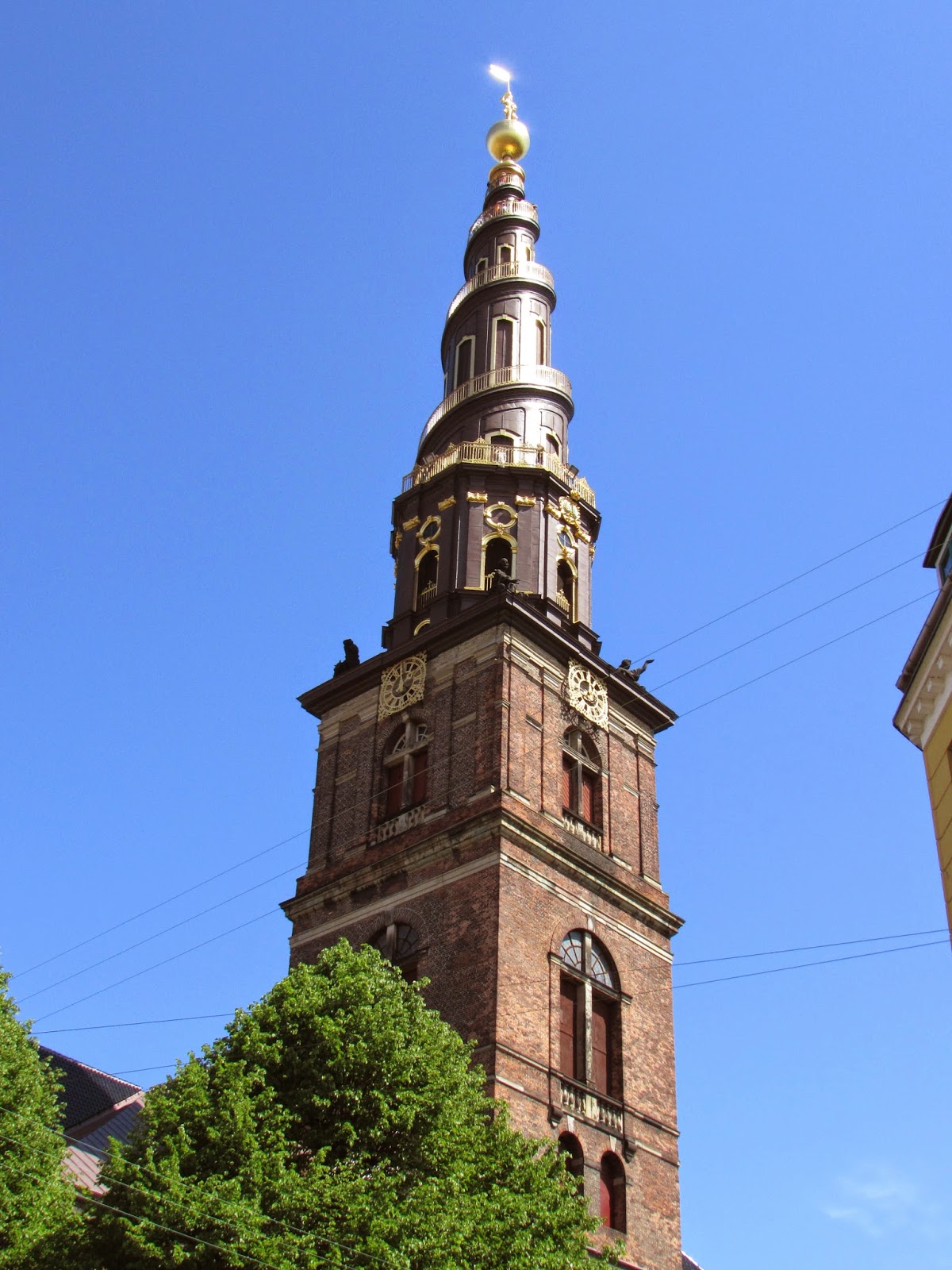On Sunday, May 25 we were in Copenhagen, Denmark
post-cruise Day 3
Since we felt we pretty much covered the city of
Copenhagen on foot, subway, bus, and canal boat the past two days, we decided
to venture out of Copenhagen and take the train to Roskilde.
Roskilde is on the Roskilde Fjord and was the
capital city of Denmark from the 10th century until 1443, and was
the king’s residence until the 15th century. In Roskilde we will visit the Viking Ship
Museum and the Domkirke (Cathedral).
For us, it was a simple 30 mile train trip, using our
Copenhagen Card once again.
 |
| The countryside |
It’s Sunday
morning and the main pedestrian street of Roskilde running down the center of
the town is pretty much deserted. After
all the crowds in Copenhagen, this was quite nice! The street is filled with many shops and
cafes.
The former City Hall of Roskilde was completed in 1884.
We pass the Roskilde Domkirke (Cathedral), which was
built in the 12th and 13th centuries. Later we will go inside. It was the first Gothic cathedral to be built
of brick and its construction encouraged the spread of this style throughout
northern Europe.
We head down through a park to the Viking
Ship Museum to see five ancient ships that were raised from Roskilde Fjord in
1962.
The centerpieces of its collection are the
well-preserved remains of five Viking ships that were purposely sunk in the 11th
century to block a navigation channel, protecting the city from attack.
These five ships represent several distinct
classes of Viking ships, such as the Longship, the Warship, and smaller fishing
and ferry boats.
 |
| How the ships were positioned when sunk |
 |
| How the sunken ships blocked the navigational channel. Only the local fisherman knew how to sail around them. |
 |
| The story |
Our guide explained in great detail how the
ships were raised and preserved so they could be displayed.
 |
| What the warship probably looked like |
 |
| The Viking garments |
After our tour inside, we walked around
outside the museum and saw a replica of one of the ships.
And there were booths set up to demonstrate
the various skills used back in the day of the Vikings.
Next we headed back up the hill to the
cathedral.
The king’s door was used as the entrance for
only the king and royal guests, but is used as an exit after weddings, funerals
and confirmations. There is no door
handle on the outside.
As we entered the cathedral, we took notice
of the inside of the king’s door. It is
made of polished and patinated bronze.
High above our heads is the clock from the
1400s. Each hour Saint George kills the
dragon and it lets out a frightful wail.
The face of the clock shows all 24 hours.
The organ is one of the finest historical
organs in Denmark; the oldest part is from around 1425. It is still used at all
church services.
The alter piece was made in 1560.
Towards the end of the 1600s, King Christian
V decided the cathedral would be used as the official royal burial place for
kings and queens. There are tombs
throughout the cathedral and date from 986 - 1972
 |
| Queen Margrethe I (1375-1412) |
Even one under construction for the current
Queen Margrethe II.
There is a photo alongside depicting how it
will look when the time comes.
Some tombs occupy an entire chapel.
Soon it was time to head back to the train
station and catch a train back to Copenhagen.
As we headed back up The Stroget to our
hotel, we saw people flipping colored plastic flaps on a wall, making
words.
We particularly liked this one and it sums up
our day and our entire vacation.
Then it was back to our hotel to pack the
suitcases for the flight home the next day filled with memories of a most wonderful trip.
And that's all folks!
















































































































